April 2020
Japanese Cuisine Around the World
Food Forum’s annual Special Report introduces those who are promoting Japanese cuisine around the world. This issue features restaurateur Joji Sugawara, who manages multiple Japanese restaurants in and around Mexico City.


Joji Sugawara
Born 1948; moved to Mexico in 1967. Founded his first Daruma Japanese restaurant in 1975; currently, there are four Daruma restaurants. Mr. Sugawara also runs the Sushi Zen chain, and is senior advisor to the Nichiboku Kyokai (Mexican Japanese Association). In 2013, received the Foreign Minister’s Commendation from the Ministry of Foreign Affairs of Japan for promoting mutual understanding between Mexico and Japan. Commended by the Mexico Restaurant Association in 2014, and in 2017 received the Minister’s Award for Overseas Promotion of Japanese Food from the Japanese Ministry of Agriculture, Forestry and Fisheries. In 2019 he was the recipient of the Order of the Rising Sun, Gold and Silver Rays.
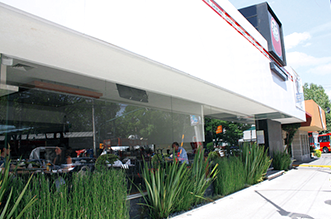
Daruma Parque Hundido
Porfirio Díaz 534, Col. Noche Buena, Mexico City
Tel: +52 (55) 5611 3171
https://daruma.com.mx
There are three other Daruma restaurants in the Mexico City area.
Sushi Zen Río Tamesis
Sushi Zen Río Elba
Sushi Zen Plaza Cuicuilco
https://sushizenrioelba.negocio.site
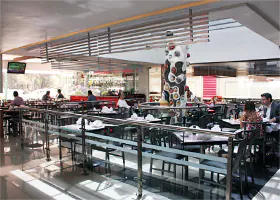
In the 1940s my father was transferred from Japan to work in Mexico for about three years. Relying on his contacts there, after graduating high school in 1967, I went to Mexico City, where I worked in a local Japanese restaurant. I always dreamed of starting my own place, and on October 18, 1975, I opened my first Daruma restaurant, a humble forty-seat eatery with a bar-counter—one of only six Japanese restaurants in the city. I chose that particular date because it marked exactly eight years since my arrival in Mexico. Our most frequent customers those days were Japanese residents working for trading companies, who accounted for less than 1 percent of the potential Mexican customer base. My plan from the outset was to familiarize locals with Japanese cuisine.
The Local Palate
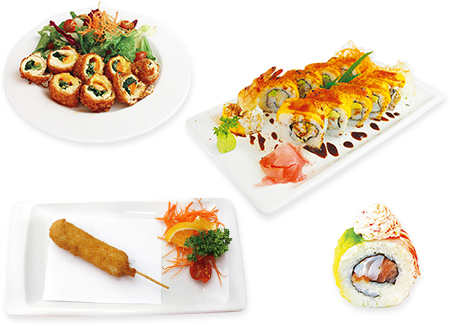
At first, Daruma served only kushi-age deep-fried skewered meat, vegetables and seafood. But locals considered these as small side dishes, not enough to satisfy the appetite, so we added variety to our menu. Not many people in Mexico were familiar with sashimi, so we started with thin-sliced suzuki sea bass sashimi, accompanied with only ponzu sauce (soy sauce mixed with citrus juice). Mexicans use locally grown lemons and limes in all their cooking, from soups to seafood and meat, so they were comfortable with the taste of ponzu, and it quickly became—and remains—a local favorite. Wasabi was not used, as it was considered too strong for the Mexican palate. In the early days, encouraging diners to try sashimi took a lot of effort. I would half-joke that I wouldn’t charge if they didn’t like it, but get them to pay double if they did! The challenge then was to discover what would satisfy the local palate. These days, our best-selling dishes are thin-sliced suzuki sashimi and kushi-age. Manchego cheese kushi-age has been a huge hit for four decades. Other popular choices include tonkatsu deep-fried pork with cheese filling, and vegetable and cheese wrapped in deep-fried chicken katsu. Despite the modest size of our restaurant, we were successful within three years after opening, serving well over two hundred customers on Sundays.
Sourcing Japanese Food
In 1982 we opened Daruma Río Tiber restaurant, with seating for eighty. Its sushi bar was instrumental in triggering the sushi boom in Mexico City. Only Japanese could be found in the sushi bar seats early on: locals were not particularly familiar with nigiri-zushi (fish atop hand-formed mounds of rice). The more common choice was maki-zushi rolls, particularly the California roll. We created various maki-zushi to suit Mexican tastes, including my own twist on tampico sauce—a Mexican favorite—which was a hit: shredded blue crab meat with minced onion and green chili mixed with mayonnaise. Mexico has the widest variety of chili peppers in the world, and avocado is another local ingredient we were quick to incorporate into our sushi. During the sushi boom, Daruma Río Tiber was packed day and night. Many Mexican notables came to enjoy our meals.
Still, all was not roses. The country was in economic crisis, suffering from both inflation and currency devaluation. High import prices had a direct impact on our costs, and some food products were temporarily banned from import. With a large portion of our menu relying on those imports, we often struggled. In fact, when we had first started our business, all ingredients from Japan, including Japanese rice, were virtually unavailable—we used rice grown by the descendants of Japanese immigrants to Mexico who had arrived in 1897. Unfortunately, that rice was not always of the best quality. Gradually, though, by the late eighties, times began to change and Japanese ingredients became easier to obtain, as the number of import companies increased.
Restaurant Expansion
In late 1988 we opened our third restaurant, Daruma Parque Hundido, a large venue with a teppanyaki corner, which proved popular. By then, most of our Mexican customers could handle chopsticks well. Forks and other Western utensils were no longer necessary—a reflection of the extent to which Japanese cuisine had been accepted. We opened Daruma restaurants in succession through the nineties, and also started the fast-food restaurant chain Sushi Zen.
An Affection for Japan
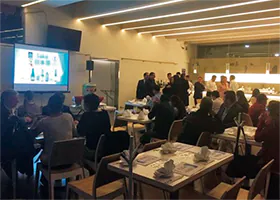
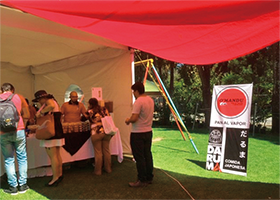
Very few competitors were around when I first started out, but the sushi trend we kicked off in the 1980s led to more sushi-focused restaurants, and sushi has gained a solid foothold among Japanese food choices here. Following on the current swell in popularity of Japanese cuisine, many new Japanese restaurants are appearing here nowadays. More and more ramen noodle shops, izakaya bars and traditional Japanese-style restaurants are being established in Mexico City and throughout the country—there may be as many as five hundred Japanese restaurants now.
As for us, since 2015 we have been holding popular sake-tasting events at our Daruma restaurants. We also host event stalls at seasonal festivals hosted by the Mexican Japanese Association, to help promote Japanese cuisine.
Other food trends have come and gone, but nothing has lasted as long as the popularity of Japanese cuisine. It may be because of the eat-healthy trend, but I also believe it is thanks in part to the influence of Japanese anime and the growing number of those who have developed a deep-seated affection for Japan.
Photos courtesy of Joji Sugawara











